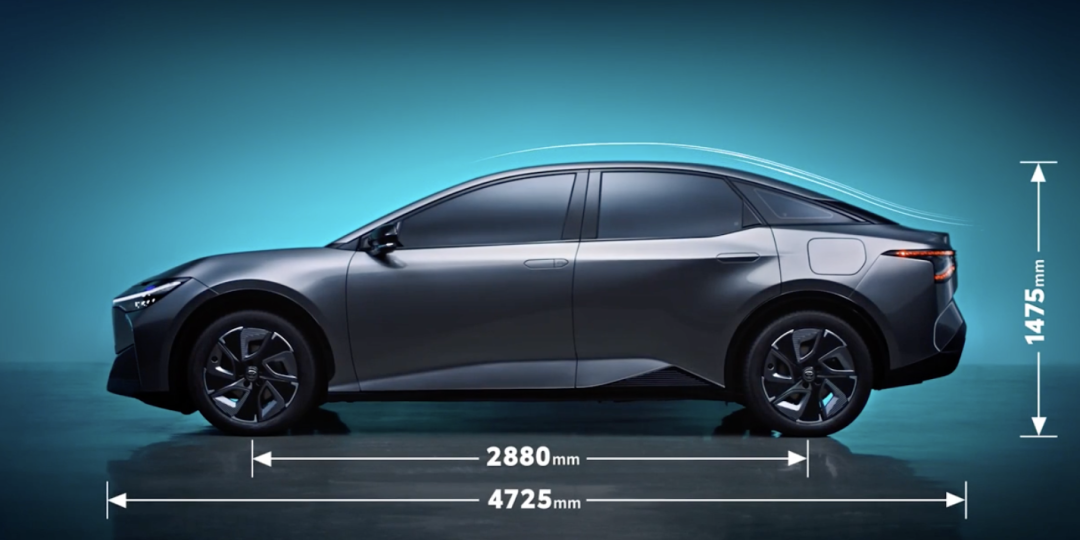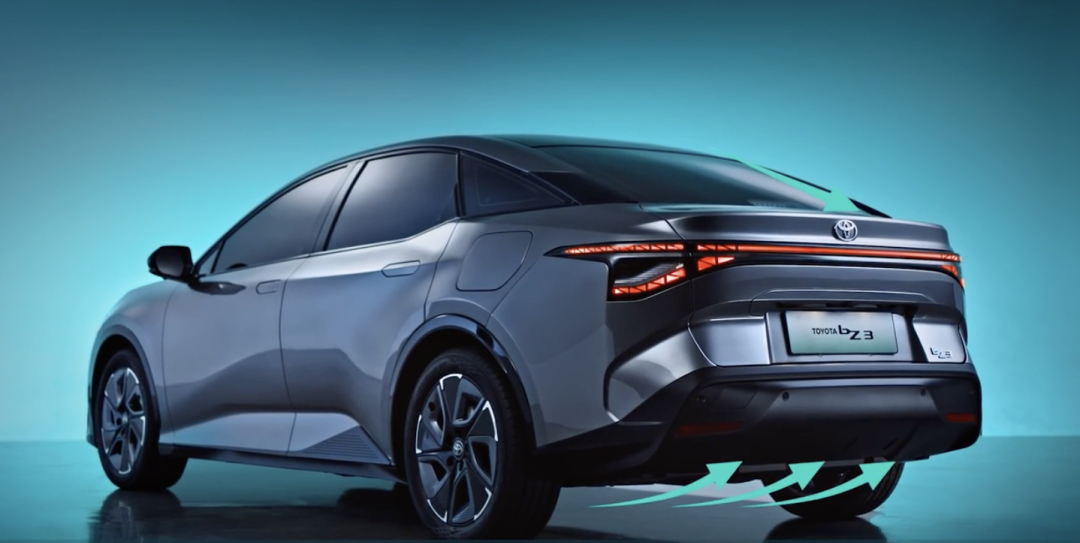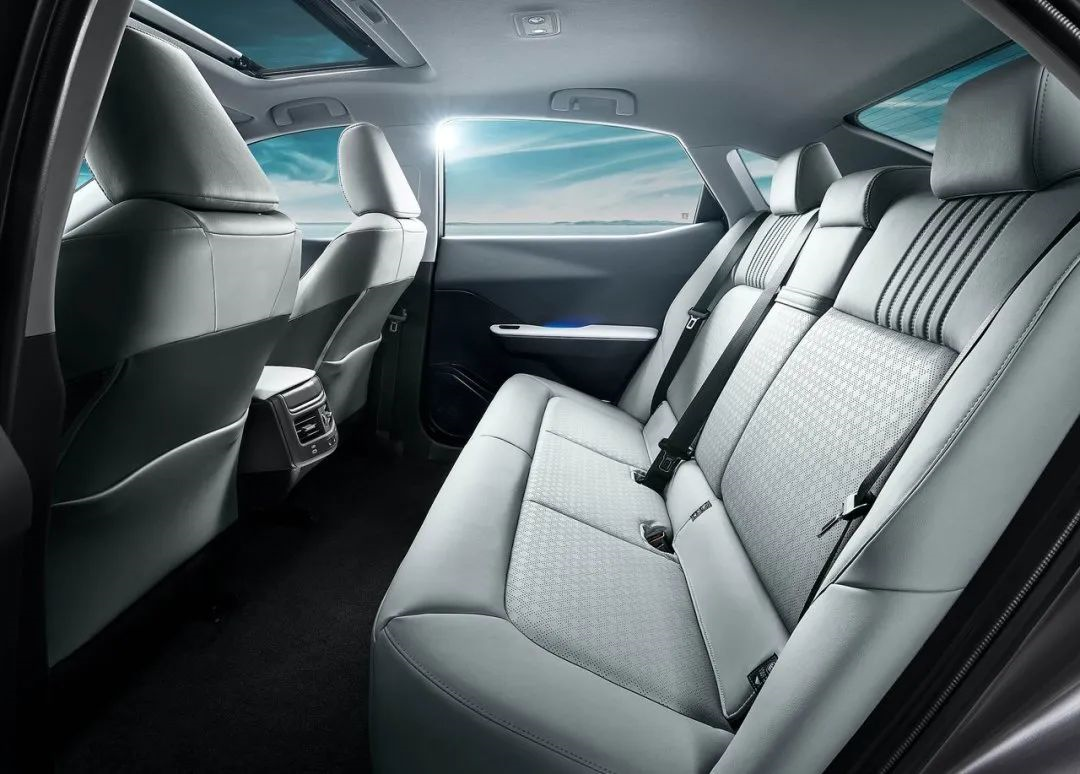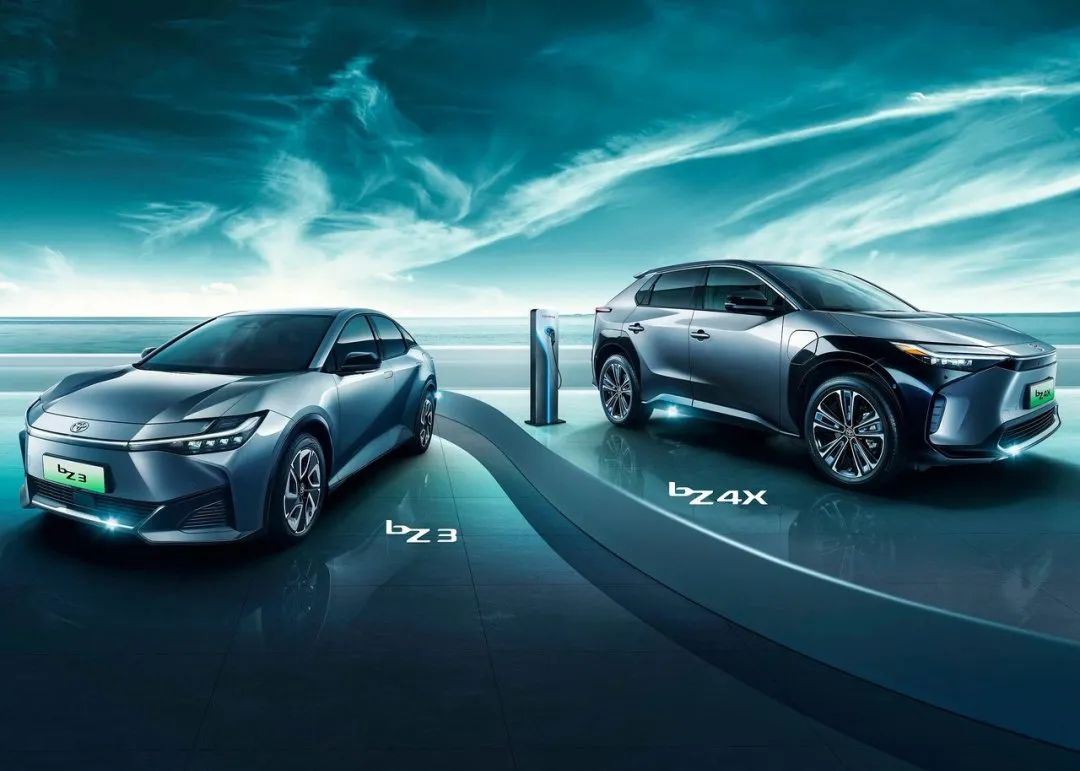Author: Xie Ruxin
After the debut of the bZ4X, Toyota quickly followed up with the release of the bZ3. This is a pure electric mid-size sedan, built on the e-TNGA platform. Additionally, it is also a product of in-depth collaboration between Toyota and BYD, with the battery and motor provided by BYD.
Personally, I think the bZ3 looks much better than the bZ4X. It loses some quirky color schemes and features a sharp front end that exudes a sense of futurism. At least for Toyota, this is futuristic enough, and the slender headlights look very sharp.

The bZ3 has dimensions of 4725/1835/1475mm in length, width, and height, respectively, with a wheelbase of 2880mm, which is similar to a B-level sedan like the BMW 3 Series. On the body size, Toyota shows some restraint, and the car is not overly large, making it generally easy to drive. At the same time, the weight of the car is not too heavy, which also means lower requirements for battery capacity, motor power, suspension, and tires. For wheel sizes, there will be 16-inch and 18-inch options, but the 16-inch may be a little small and doesn’t meet the aesthetic needs of modern cars.

The layout of a pure electric sedan has inherent advantages in space utilization. From the side, you can see that its front and rear ends are relatively short, and most of the length is left to the cabin, so the interior space is reasonable. Additionally, the roofline is not cramped, leaving plenty of headroom for rear passengers.
The three-dimensional sense of the car’s tail is also good, and the through-type taillights widen the visual width of the rear. Overall, the appearance of the bZ3 is not stunning, but its proportions are symmetrical, making it look younger and it does not adopt overly exaggerated elements to show that it is a new car, making it suitable for both old and young.

The interior is very simple, and the central control screen integrates most of the functions, with the gearbox being a knob-style. The adjustment of the rearview mirror also needs to be operated on the central control screen, following the bad habit of new automakers. Interestingly, its instrument and steering wheel are attached together, and when adjusting the steering wheel, they are moved together to ensure that the steering wheel never blocks the instrument. Although this design is not new, it matches quite well with a futuristic new car. In addition, the turn signal is made into a button on the steering wheel, and unexpectedly, you can experience the feeling of driving a Ferrari even on a Toyota.

The cushion and backrest angle of the rear seat are relatively reasonable, thanks to its low floor height, which is an advantage that many electric cars do not have. The seats use gray as the main color, giving a calm and technological feeling.
 There are two versions of bZ3 with different power systems: the CLTC 517km version with a maximum motor power of 135kW, a maximum torque of 303N·m, and a battery capacity of 49.92kWh; and the CLTC 616km version with a maximum motor power of 180kW, a maximum torque of 303N·m, and a battery capacity of 65.28kWh. Both models are rear-wheel drive with a single motor, and are equipped with BYD’s lithium iron phosphate prismatic batteries.
There are two versions of bZ3 with different power systems: the CLTC 517km version with a maximum motor power of 135kW, a maximum torque of 303N·m, and a battery capacity of 49.92kWh; and the CLTC 616km version with a maximum motor power of 180kW, a maximum torque of 303N·m, and a battery capacity of 65.28kWh. Both models are rear-wheel drive with a single motor, and are equipped with BYD’s lithium iron phosphate prismatic batteries.

Judging from the data, the acceleration performance of bZ3 is relatively dull, but with a 65-degree battery, it can achieve a range of over 600km, indicating a high level of overall power matching. This is also thanks to its good lightweight design. The 517km range version weighs 1710kg and the 616km range version weighs 1835kg, both are lighter than other electric cars of the same size. In addition, its drag coefficient is 0.218, which is a relatively low level and contributes to energy conservation.
Regardless of how bZ3 actually performs on the road, its appearance has a milestone significance. As an internationally renowned automaker, Toyota chose to cooperate with BYD for the localization of electric vehicles, which shows that BYD’s key electric vehicle technologies, such as motors and batteries, have indeed reached world-class standards. In the era of gasoline-fueled cars, the key factor that restricted domestic car production was the power system. However, in the era of electric cars, Chinese-made power systems already have the ability to occupy a dominant position, which is a major breakthrough.
This article is a translation by ChatGPT of a Chinese report from 42HOW. If you have any questions about it, please email bd@42how.com.
